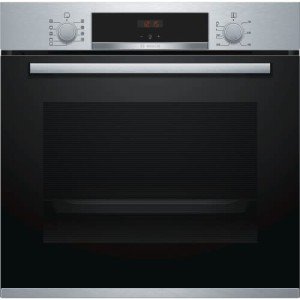ovens built in of Built-In Ovens: A Seamless Approach to Modern Cooking
In contemporary kitchens, where design aesthetic appeals mix effortlessly with performance, one device stands apart as a true video game changer: the built-in oven. As property owners and chefs alike continue to seek ingenious solutions that boost their cooking experience, built-in ovens have become progressively popular. This short article explores the advantages, factors to consider, and trends surrounding built-in ovens, highlighting why they are an essential function in modern-day cooking spaces.
What is a Built-In Oven?

A built-in oven is a kitchen area home appliance developed to be integrated into the kitchen cabinetry of a kitchen area rather than standing alone. Unlike standard freestanding ovens, which can be moved and placed anywhere, built-in ovens can be found in various styles and sizes to fit specifically within designated areas. Available in single or double configurations, these ovens use a structured appearance that complements modern kitchen designs.
Advantages of Built-In Ovens
1. Space-Saving Design
Among the most enticing benefits of built-in ovens is their space-saving design. By incorporating the oven into kitchen cabinetry, you can release up important counter and flooring space. This is particularly advantageous in smaller cooking areas, where optimizing room is important. Built-in ovens can be installed at eye level, making them more available and minimizing the need to flex down.
2. Aesthetic Appeal
Built-in ovens add to a sleek and cohesive kitchen area design. Offered in different finishes-- such as stainless-steel, black, white, and customized kitchen cabinetry-- they can mix flawlessly into the general decor. This visual appeal enhances the kitchen's visual harmony and elevates the space, developing a contemporary and sophisticated environment.
3. Boosted Functionality
Many built-in ovens come equipped with advanced cooking innovations, such as convection cooking, steam ovens, and clever functions. These enhancements enable flexible cooking choices, making it simpler to accomplish professional-level outcomes in your home. Smart built-in ovens can even link to Wi-Fi, enabling users to manage the oven remotely, receive notifications, and gain access to a range of cooking programs and recipes.
4. Enhanced Ventilation
Due to the fact that built-in ovens can be integrated with kitchen hoods and ventilation systems, they can assist maintain much better air quality and lower cooking odors. This is specifically considerable for those who love to prepare with aromatic spices and active ingredients, as an effective ventilation system can keep the kitchen comfy and inviting.
5. Personalization Options
Built-in ovens offer a wide variety of modification choices to match specific cooking designs and requirements. From professional-grade home appliances with several cooking modes to compact designs for smaller sized kitchen areas, homeowners can select the oven that fits their specific requirements. Many producers also offer adjustable front panels, enabling you to match the oven's look to your cabinets for a genuinely unified look.
Factors to consider When Choosing a Built-In Oven
While built-in ovens have lots of advantages, there are very important considerations to bear in mind before making a purchase:
1. Cost
Built-in ovens generally come with a higher price than their freestanding counterparts due to their style and setup requirements. It's essential to consider both the expense of the oven and any additional expenditures connected to cabinetry modifications or installation.
2. Setup Requirements
Setting up a built-in oven often requires expert support, particularly if you require to customize existing kitchen cabinetry. Ensure that you consider any costs related to setup, consisting of labor and prospective cabinetry changes.
3. Size and Dimensions
Before acquiring a built-in oven, determine the designated space accurately to make sure an appropriate fit. Built-in ovens come in different sizes and setups, so choosing one that lines up with your needs and kitchen style is essential.
4. Way of life and Usage
Consider your cooking habits and requires when selecting a built-in oven. If you regularly host big events, a double oven might be more useful. On the other hand, if you have a compact kitchen area, a single-wall oven may be enough.
Trends in Built-In Ovens
The kitchen appliance market is constantly evolving, and built-in ovens are not exempt from emerging trends. Some existing trends consist of:
Smart Technology Integration: With the increase of clever home technology, built-in ovens now typically feature connection choices. This permits users to keep track of cooking development and adjust settings by means of mobile apps.
Energy Efficiency: As sustainability ends up being a top priority, lots of manufacturers are investing in energy-efficient built-in ovens that lower energy intake while preserving performance.
Multi-functional Designs: Built-in ovens now offer features such as air frying, slow cooking, and steaming, providing adaptability that fulfills a large range of cooking approaches.
Conclusion
Built-in ovens undoubtedly represent a perfect mix of design, function, and convenience in today's kitchens. As more property owners go with this modern-day solution, the focus moves to developing a cooking space that is as aesthetically pleasing as it is practical. Whether you are constructing a brand-new home or remodeling your kitchen area, considering a built-in oven could raise your cooking experience and transform your kitchen into an elegant and functional haven. With a variety of alternatives available and continuous developments in innovation, built-in ovens remain a standout option for both amateur cooks and culinary enthusiasts alike.
